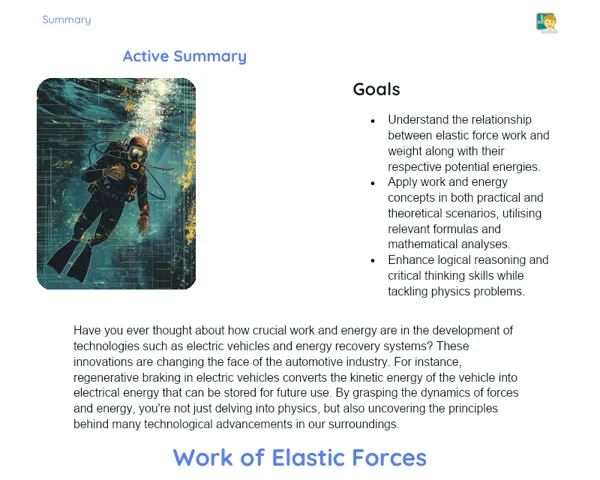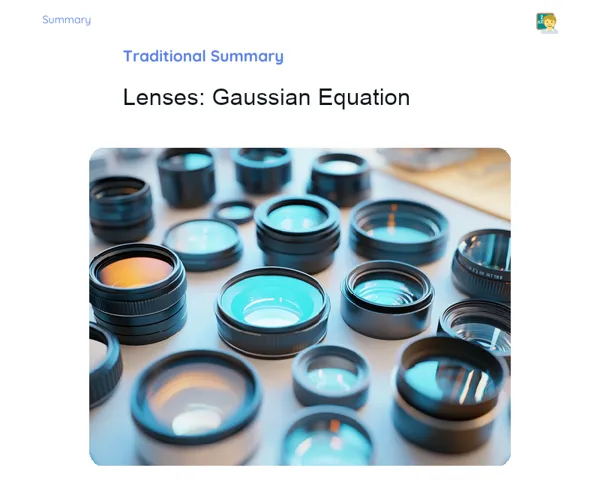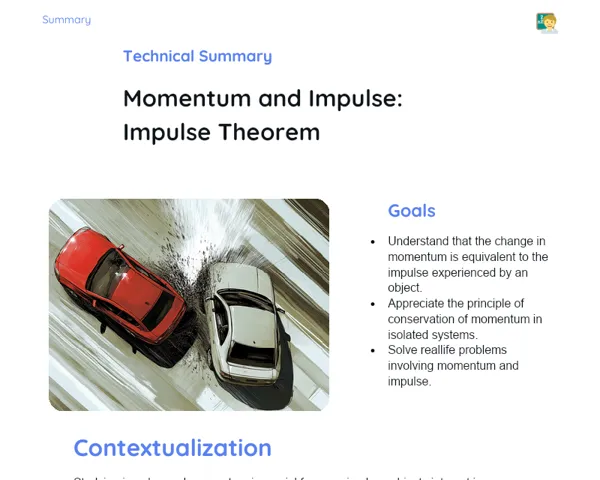Summary Tradisional | Flat Mirror: Image Formation
Contextualization
Flat mirrors are common objects in our everyday lives, found in places like homes, shops, and offices, where they are essential for a wide range of activities. Historically, mirrors have come a long way from polished stone surfaces to advanced glass materials coated with metals such as silver or aluminum. Beyond their decorative appeal, flat mirrors hold a critical place in scientific and technological applications, including telescopes, periscopes, and security systems.
Grasping the properties of flat mirrors is vital for tackling practical physics challenges. A flat mirror produces virtual images that are upright and identical in size to the objects being reflected, adhering to the laws of reflection. These laws state that the angle of the incoming light equals the angle of reflection, and the incoming and reflected rays, alongside the normal to the mirror's surface, all reside in the same plane. This theoretical framework is key to designing many optical devices utilized across various scientific and technological niches.
To Remember!
Definition of Flat Mirror
A flat mirror features a perfectly smooth and flat surface that creates virtual images of objects. Reflection occurs when light strikes the surface of the mirror and bounces back. The hallmark of a flat mirror is that it preserves the proportions and orientations of the reflected object without distortion. The image produced is virtual, indicating that it cannot be projected onto a screen since the light rays do not converge at a real point, but seem to diverge from a point behind the mirror.
Moreover, the image in a flat mirror is upright (not inverted) and identical in size to the object. This characteristic sets it apart from other mirror types, such as concave and convex mirrors, which can enlarge or shrink the image and invert its orientation.
Additionally, the image remains symmetrical with respect to the mirror's plane, meaning each point of the image is equidistant from the mirror as the corresponding point of the object, but on opposite sides of the mirror's plane.
-
A flat mirror is a flat reflective surface.
-
It forms virtual, upright images the same size as the object.
-
The image is symmetrical with respect to the mirror's plane.
Laws of Reflection
The laws of reflection are fundamental principles explaining light behavior when it strikes a reflective surface like a flat mirror. The first law states that the angle of incidence (the angle between the incident ray and the normal to the surface at the incidence point) equals the angle of reflection (the angle between the reflected ray and the same normal).
The second law indicates that the incident ray, the reflected ray, and the normal to the surface at the point of incidence all lie within the same plane, known as the plane of incidence. These laws are universally applicable, not only in flat mirrors but also in curved surfaces.
Comprehending these laws is key to analyzing and understanding image formation in mirrors. They enable us to predict the direction of reflected rays, thus determining the position and characteristics of the resulting image.
-
First law of reflection: the angle of incidence equals the angle of reflection.
-
Second law of reflection: incident ray, reflected ray, and normal are in the same plane.
-
The laws of reflection are universal and apply to all reflective surfaces.
Image Formation in Flat Mirror
Image formation in a flat mirror adheres to the laws of reflection. When an object stands before a flat mirror, light rays emanate from each point of the object, strike the mirror, and are reflected. According to the first law of reflection, the angle of incidence equals the angle of reflection, allowing the rays to appear diverging from a point behind the mirror.
The resulting image is virtual, meaning the light rays do not actually converge to create the image but seem to diverge from a position behind the mirror. The image remains upright and the same size as the object, owing to the symmetry of the reflection process. These insights are vital for comprehending how flat mirrors are applied in practical contexts, such as in bathroom mirrors or optical instruments.
To visualize image formation, sketching ray diagrams can be particularly useful. These diagrams illustrate the paths of the light rays as they reflect from the mirror, aiding in identifying the position and nature of the image.
-
The image formed by a flat mirror is virtual and appears to be behind the mirror.
-
The image is upright and the same size as the object.
-
Ray diagrams help visualize image formation.
Distance of Image from the Mirror
A notable feature of flat mirrors is the correlation between the distance from the object to the mirror and the distance of the image from the mirror. The distance of the image from the mirror matches the distance from the object to the mirror, thanks to the symmetry in reflection.
For example, if an object is 3 meters away from the mirror, the image will emerge 3 meters from the mirror but on the opposite side. Thus, the overall distance between the object and its image totals to 6 meters. This principle is crucial for solving physics problems involving flat mirrors.
Understanding this relationship is vital for predicting image locations and calculating distances in practical scenarios, whether for security systems or scientific experiments.
-
The distance of the image from the mirror equals the distance of the object from the mirror.
-
The total distance between the object and the image is twice the distance of the object from the mirror.
-
This relationship is important for solving problems involving flat mirrors.
Key Terms
-
Flat Mirror: Flat reflective surface that forms virtual images.
-
Laws of Reflection: Principles that describe the behavior of light when it strikes a reflective surface.
-
Virtual Image: Image that seems to exist at a point behind the mirror but cannot be projected onto a screen.
-
Angle of Incidence: Angle between the incident ray and the normal to the surface at the point of incidence.
-
Angle of Reflection: Angle between the reflected ray and the normal to the surface at the point of incidence.
-
Plane of Incidence: Plane containing the incident ray, reflected ray, and the normal to the surface at the point of incidence.
Important Conclusions
Studying flat mirrors involves understanding their essential properties, like the formation of virtual images that are upright and match the size of the reflected object. The laws of reflection, which encapsulate the equality of angles of incidence and reflection, as well as the coplanarity of incident and reflected rays, are vital for grasping how images are formed. Furthermore, the relationship between the distance from the object to the mirror and the distance of the image from the mirror emerges as a critical characteristic for addressing practical physics challenges.
This knowledge holds immense importance not only for tackling theoretical queries but also for practical applications in our daily lives and diverse technological sectors. The ability to predict and calculate the characteristics and locations of images produced by flat mirrors finds relevance in security systems, optical devices, and other technologies.
We encourage our students to delve deeper into this topic, considering its myriad applications and practical significance. Gaining insight into flat mirrors can serve as a doorway to more advanced concepts within optics and physics, while also providing a robust foundation for future explorations in technological and scientific domains.
Study Tips
-
Regularly review ray diagrams, sketching various situations to bolster your grasp of image formation.
-
Practice resolving problems involving flat mirrors, emphasizing the application of laws of reflection and the relationship between object and image distances.
-
Explore additional resources, such as educational videos and online simulators, which can offer dynamic visualizations for the concepts being studied.



